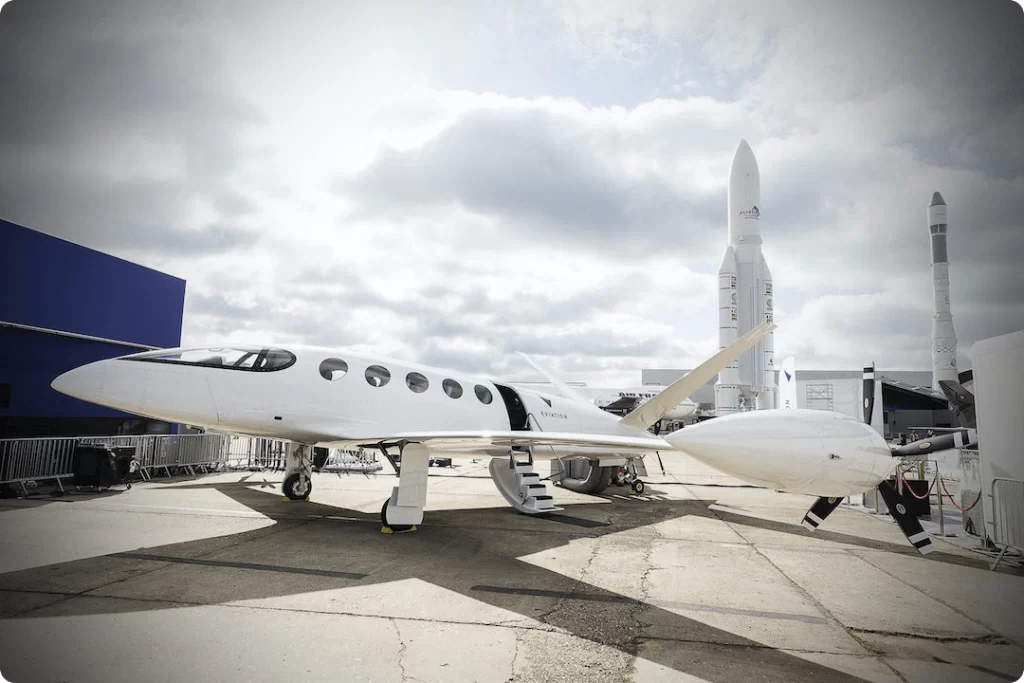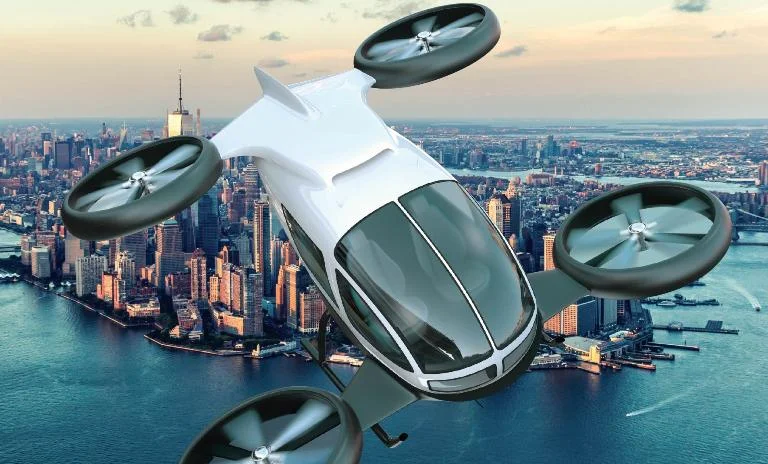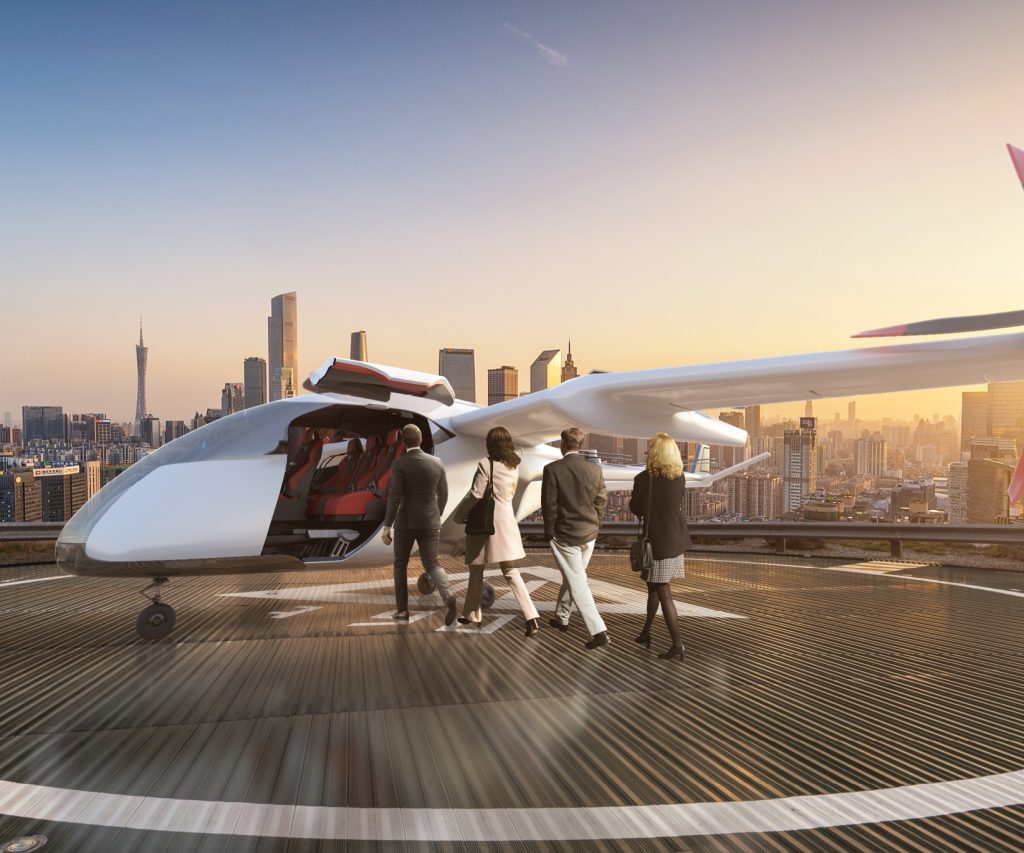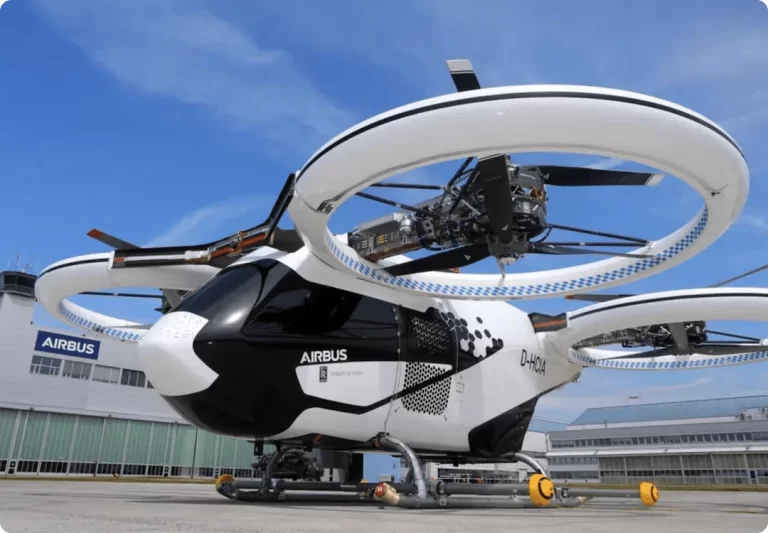Welcome, fellow travelers and tech enthusiasts, to the exciting world of travel technology! In today’s fast-paced and interconnected world, the way we travel is continually evolving thanks to cutting-edge advancements in technology. From planning your next adventure to making the most of your time on the road, technology has become an indispensable companion for modern travelers. Join me as we dive into the latest and greatest innovations in the travel tech industry and discover how they’re reshaping the way we explore the world.
The travel and tourism industry is on the move, quite literally! With an annual growth rate of 4.41%, it’s a sector that keeps evolving, driven by technology’s relentless march. In this blog, we’ll take you on a journey through the electrifying advancements in travel technology, showcasing how personalized tech trends are reshaping the way we explore the world.
Tech Adoption Accelerates
In the rapidly evolving landscape of the travel and tourism industry, technology has emerged as the driving force behind transformative changes. The COVID-19 pandemic acted as a catalyst for this transformation, pushing the travel sector to swiftly embrace technological advancements. Here’s a closer look at how tech adoption has accelerated in various aspects of the industry:
Room Service Robots: Imagine arriving at your hotel and being greeted not by a human but by a robotic butler ready to assist you. Two Chinese hotel giants recognized the potential in this tech trend and invested in ExcelLand, a manufacturer with 3,000 robots already in operation. These robots are more than just novelties; they’re practical solutions to control costs and ensure guest safety, particularly in a post-pandemic world. Room service robots are emblematic of the travel industry’s commitment to incorporating technology to enhance the guest experience.
Chatbots: Hotels, airlines, booking sites, and various other travel service providers have wholeheartedly embraced chatbots. Travelers can now chat with these virtual assistants at every stage of their journey, from planning to booking to on-the-ground assistance. This widespread adoption of chatbots is thanks to advancements in AI that have made these interactions feel increasingly human. Travelers no longer feel like they’re engaging with mere robots; instead, they receive seamless and efficient customer service throughout their journey.
Facial Recognition Technology: Airports and airlines have been deploying facial recognition technology at an accelerating pace. This innovation is seen as a game-changer for enhancing travel safety and efficiency. However, it’s also a topic of debate, as privacy advocates express concerns about the potential for an Orwellian surveillance state. The accelerated adoption of facial recognition technology exemplifies the industry’s eagerness to utilize tech solutions, even if it requires balancing convenience with personal security.
Smartphones: Amidst the excitement surrounding cutting-edge tech, the travel industry has not forgotten the trusty smartphone. Travel companies are aware that mobile devices are integral to travelers’ lives and experiences. Statistics reveal that those who book tours and activities via their smartphones tend to spend 50% more than those using other platforms. The smartphone remains a powerful tool for connecting travelers with their dream destinations and experiences, showcasing the industry’s adaptability and responsiveness to consumer preferences.
Electric Air Travel: The adoption of electric air travel marks a significant shift towards sustainability and innovation. Startups like Eviation have taken the lead in designing electric airplanes with impressive ranges, delivering a cleaner and more cost-efficient alternative to traditional fossil fuel-powered planes. The adoption of electric air travel is not just an industry trend but a commitment to reducing its carbon footprint.
eVTOLs: Electric Vertical Take-Off and Landing aircraft, or eVTOLs, are poised to transform short-distance urban mobility. These innovative aircraft come in various designs and have numerous advantages, including reduced noise emissions, lower vibrations, and increased safety through redundancy. The rapid emergence of eVTOLs reflects a collaborative effort between startups and major players in the aviation industry, as they seek to revolutionize how people navigate their cities. The experimentation with urban air mobility initiatives in various countries, from Germany to Brazil, demonstrates the growing interest in and adoption of eVTOLs.
Overcoming Energy Density: The quest to overcome the energy density challenge in electric air travel is another testament to tech adoption in the industry. Energy density, which measures the stored energy in one pound of fuel, has historically favored fossil fuels over batteries. However, industry leaders are determined to reach a point where batteries surpass traditional fuels, unlocking the potential for electric aviation. Tesla CEO Elon Musk’s prediction of reaching this threshold soon signifies the industry’s unwavering commitment to leveraging technology to create a more sustainable and electrifying future of travel.
Electric Air Travel Emerges as an eye opener for future Travel industry

In an era where sustainability and eco-consciousness have become paramount, the emergence of electric air travel represents a significant shift in the travel industry. Electric aviation promises not only to reduce the environmental impact but also to revolutionize the economics of air travel. Here, we delve into the emergence of electric air travel in the context of the broader technological trends in the travel industry discussed earlier.
Sustainability and Economics: The adoption of electric air travel aligns with the travel industry’s commitment to sustainability. As the industry looks to reduce its carbon footprint, electric planes offer a cleaner and more cost-effective alternative to traditional fossil fuel-powered aircraft. Electric vehicles, including airplanes, are cheaper to run, require less maintenance, and are better for the environment.
Statistics show that electric planes can dramatically reduce operating costs. For instance, a 100-mile flight in a conventional internal-combustion powered plane might cost around $400 in fuel. In contrast, an electric plane like Eviation’s Alice could complete the same journey for just about $10. This significant cost reduction has the potential to reshape the economics of air travel, making it more accessible and environmentally friendly.
Advantages of Electric Air Travel: Electric aircraft offer several advantages, making them a compelling choice for the future of air travel.
- Reduced Operating Costs: The lower cost of electricity compared to traditional aviation fuels leads to substantial savings for airlines and, potentially, passengers.
- Environmental Benefits: Electric planes produce zero emissions during flight, reducing the industry’s carbon footprint and contributing to a greener planet.
- Noise Reduction: Electric aircraft, thanks to their distributed electric propulsion (DEP) system, generate less noise and vibration. This can significantly improve the passenger experience and reduce noise pollution in the vicinity of airports.
- Safety and Redundancy: DEP systems also enhance safety through motor redundancy. If one motor fails, others can compensate, reducing the risk of accidents.
Challenges in Electric Air Travel: While the prospects of electric air travel are exciting, some challenges remain. One of the critical challenges is energy density. The amount of stored energy in one pound of batteries needs to reach a level that surpasses traditional aviation fuels for electric aviation to truly take off.
Currently, the energy density of leading Tesla batteries is around 260 Wh/kg. Industry experts suggest that achieving an energy density of 400 Wh/kg is the crossover point where lithium-ion batteries can outperform kerosene jet fuel. Achieving this milestone is crucial for making electric aviation more practical for long-haul and larger aircraft.
eVTOLs: Transforming Urban Mobility and Beyond

Electric Vertical Take-Off and Landing aircraft, commonly known as eVTOLs, are revolutionizing the way we think about urban transportation. These innovative aircraft are designed for short-distance flights within and between cities, providing a glimpse into the future of urban mobility. With their unique capabilities, eVTOLs have a broad range of potential commercial use cases that promise to reshape our cities and transportation systems in the years to come.
1. Urban Air Mobility (UAM): One of the most prominent use cases for eVTOLs is urban air mobility. Imagine a network of small electric aircraft that can take off and land vertically, connecting city centers, suburbs, and even nearby cities. This mode of transportation can help alleviate traffic congestion, reduce commute times, and provide a more efficient and convenient way to navigate urban areas. Passengers could use eVTOLs for their daily commutes, meetings, or simply to avoid gridlock during rush hours.
2. Air Taxis: Air taxis are expected to be a significant commercial application of eVTOL technology. Companies like Uber and numerous startups are actively developing air taxi services that aim to make point-to-point, on-demand urban air travel a reality. Passengers would be able to book short trips in eVTOLs to reach their destinations quickly, avoiding ground traffic. Air taxis could become a common mode of transportation for both business and leisure travelers.
3. Medical Evacuation and Emergency Services: eVTOLs have the potential to transform medical evacuation and emergency services. These aircraft can rapidly transport medical professionals and equipment to remote or congested areas, improving response times in critical situations. Whether it’s delivering life-saving medical supplies or providing emergency medical assistance, eVTOLs can play a crucial role in saving lives.
4. Cargo and Logistics: Beyond passenger transport, eVTOLs have applications in cargo and logistics. They can efficiently transport small packages, medical supplies, and other time-sensitive goods within cities. This could expedite the delivery process for e-commerce companies and enhance the efficiency of last-mile logistics. Additionally, eVTOLs could be used for aerial surveillance, inspection, and maintenance of critical infrastructure, making these tasks quicker and safer.
5. Tourism and Sightseeing: eVTOLs have the potential to offer unique and breathtaking experiences for tourists. They can provide scenic tours and sightseeing opportunities in a way that traditional ground-based tours cannot. Passengers can enjoy panoramic views and access remote or difficult-to-reach destinations, offering a new dimension to the tourism industry.
6. Search and Rescue Missions: In emergency situations, such as natural disasters or wilderness search and rescue missions, eVTOLs can play a vital role. They can quickly transport search and rescue teams to disaster-stricken areas, conduct aerial surveys, and aid in locating and rescuing survivors.
7. Environmental Benefits: The adoption of eVTOLs can significantly reduce carbon emissions in urban areas. Electric propulsion, especially when powered by renewable energy sources, can make urban air transportation environmentally friendly. This environmental benefit aligns with the growing emphasis on sustainability in transportation.
Challenges and Future Outlook: While the potential applications of eVTOLs are promising, several challenges must be addressed for their widespread adoption. These include regulatory approvals, infrastructure development, noise reduction, and battery technology advancements to extend range and performance. As these challenges are overcome, eVTOLs are likely to become an integral part of urban transportation systems, offering a more efficient, convenient, and sustainable way to move people and goods within and between cities.
In the not-so-distant future, you might find yourself commuting to work in a small electric aircraft, escaping traffic jams, or embarking on a breathtaking aerial tour of a scenic destination—all thanks to the innovative and transformative potential of eVTOLs.
Investment Alert: Seize the Future of Urban Air Mobility and eVTOLs for High ROI
In the fast-evolving landscape of transportation, the convergence of technology and sustainability is opening up exceptional investment opportunities. The Travel Tech industry, growing at an annual rate of 4.41% and set to reach a market value of nearly $1 billion by 2026, offers compelling prospects for future investors.
The emergence of Electric Vertical Take-Off and Landing aircraft (eVTOLs) is a game-changer. These innovative, short-range electric aircraft are set to transform urban mobility. From air taxis to cargo logistics, eVTOLs are revolutionizing how we move people and goods within cities. The market for urban air mobility is poised for explosive growth.
Electric air travel is another pivotal area for investment. Electric planes are cost-effective and environmentally friendly, reducing operational costs and carbon emissions. They promise to reshape short-haul and regional travel, presenting a substantial market opportunity.
Investors looking for high returns should consider positioning themselves in companies pioneering these technologies. With regulatory approvals and infrastructure development steadily advancing, now is the time to explore investment opportunities in eVTOL and electric air travel companies. The future of transportation is electric, and those who invest wisely can expect to ride this wave to exceptional ROI.
Conclusion: The Travel Tech Revolution Unveiled

The world of travel is undergoing a remarkable transformation, driven by an ever-accelerating wave of technological innovations.In this journey into the future, we’ve explored a multitude of technological advancements that are reshaping the way we explore the world.
The acceleration of tech adoption in the travel industry, catalyzed by the COVID-19 pandemic, has introduced us to room service robots and sophisticated chatbots that enhance customer experiences and streamline operations. Furthermore, facial recognition technology is redefining travel safety, even as it sparks a debate about privacy and surveillance.
Our trusty smartphones have become indispensable tools for travelers, allowing them to book tours, accommodations, and activities, driving a 50% increase in spending when compared to other platforms. And speaking of spending, electric air travel has emerged as a game-changer, reducing costs and environmental impact, with electric planes offering a greener and more economical alternative to traditional aircraft.
In addition to electric planes, Electric Vertical Take-Off and Landing aircraft (eVTOLs) are revolutionizing urban mobility. These innovative aircraft are poised to transform urban air mobility, offering services such as air taxis and fast, efficient point-to-point transportation, while also finding applications in medical evacuation, cargo logistics, tourism, and even search and rescue missions.
The future of travel tech is not without its challenges, such as energy density in electric aviation, regulatory approvals for eVTOLs, and infrastructure development. However, as technology continues to advance and these challenges are addressed, the future of travel promises to be more sustainable, efficient, and accessible for all.
In this exciting era of technological innovation, travelers, businesses, and the environment all stand to benefit from the continued evolution of travel tech. The horizon is filled with possibilities, and the journey into the future of travel has just begun. Travelers and tech enthusiasts alike can look forward to a world of adventures that are not only connected and convenient but also increasingly eco-friendly and exhilarating. So fasten your seatbelts and prepare for a journey into the tech-driven future of travel—it’s going to be an electrifying ride!

